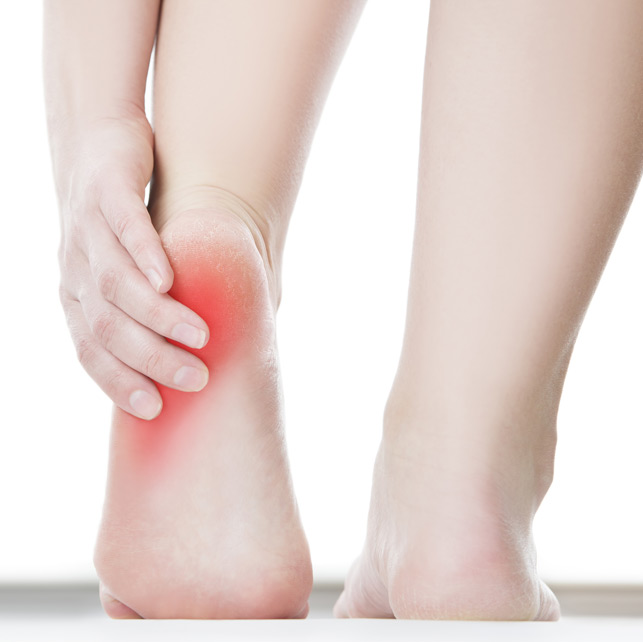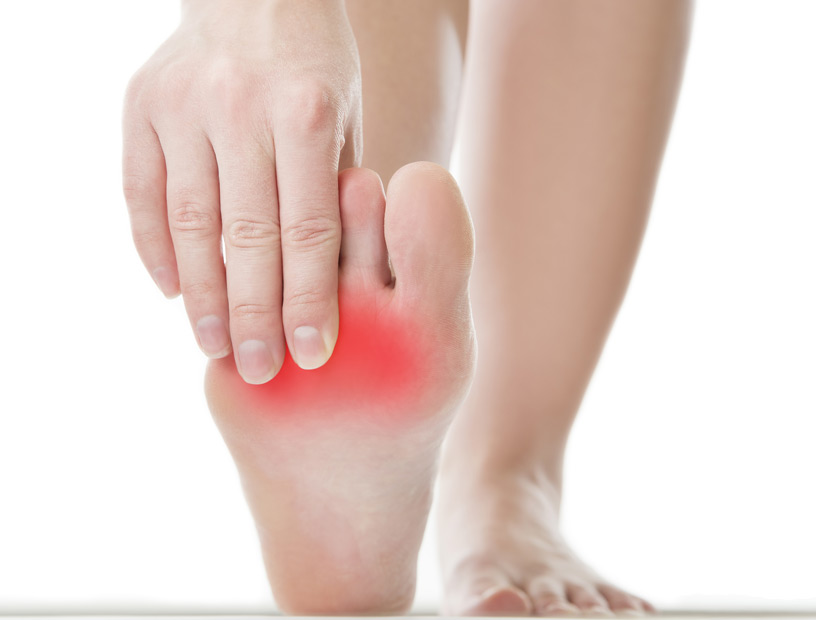
Although plantar fasciitis is common, there are helpful treatment options available.
Plantar fasciitis is a common source of heel and arch pain in men and women. It includes inflammation of the plantar fascia, which is a thick band of tissue that goes across the bottom of your foot from the hallux, or heel bone, to the ball of the foot.
- Plantar fasciitis is one of the most common causes of heel pain
- Women seem to be affected more than men
Plantar fasciitis feels like a hot, stabbing pain and is worse in the morning when you take your first steps of the day. This condition is especially common in people who are physically active and perform high-impact, weight-bearing exercises such as running, playing football, or practicing ballet. You may also be at risk of developing plantar fasciitis if you have high arches, flat feet, or you are overweight. Wearing high-heeled shoes and shoes with inadequate arch support also increase your risk of plantar fasciitis.
Causes
When the plantar fascia is functioning properly, it absorbs the shock from each of your steps. It works like a bowstring, supporting the natural curvature of your foot’s arch. When the tension on the fascia is too much due to your activity, lack of support or your foot’s natural shape, the fascia experiences small tears. Over time, the stretching and tearing of the fascia causes irritation and inflammation.
Symptoms

The primary symptom of plantar fasciitis is a stabbing pain on the bottom of your foot close to your heel. It is worse with your first few steps in the morning because overnight, your ligament relaxes. Taking a step and putting pressure from your body weight on your foot causes the ligament to suddenly tighten. Your symptoms may also flare after you stand up from being seated for a long time. A day spent wearing high-heeled shoes or doing intense physical activity such as running, marching, or dancing may also trigger your symptoms.
Treatments
Treatments for plantar fasciitis usually begin with conservative care. An orthopedist can make customized orthotic inserts that you wear in your shoes. You may also be instructed to wear supportive shoes, to stop wearing high-heeled shoes, and to reduce your physical activity. The physician can also tape your foot to limit the stretching of the plantar fascia.
Cortisone injections may be given to you to reduce the inflammation, although these injections can only be done a couple of times. You may be shown some stretching exercises to help reduce the tightness of the fascia. Rolling your foot on a bottle of frozen or cold water can also help with the pain. Your doctor might also give you night splints that will help to stretch the plantar fascia slightly while you sleep. This reduces the pain that you feel with your first morning steps.
When non-surgical treatments do not provide you with relief, your orthopedist may recommend a surgical intervention. Surgery for plantar fasciitis involves severing the connection between the heel bone and the plantar fascia. This surgery is only done once all other treatments for your pain have been tried. The recovery time is 4 to 6 weeks, followed by physical therapy and exercise.

on caring for specific orthopedic needs.
